Video:Cricothyrotomy
| Cricothyrotomy (Tutorial) | |
|---|---|
| Commons / NC | |
| Steps for video creation | |
| Step 1 | Preview my changes (10 sec) |
| Step 2 | Upload to Commons (10 min) |
Indications
The indication for a cricothyrotomy is a "cannot intubate, cannot ventilate" situation.[1]


Step 0
The first step is to gather the needed equipment. This includes a scalpel, a bougie, a 6-0 endotracheal tube, and a 10 cc syringe.

Step 1a
Feel the laryngeal prominence (Adam's apple) of the thyroid cartilage.[2]
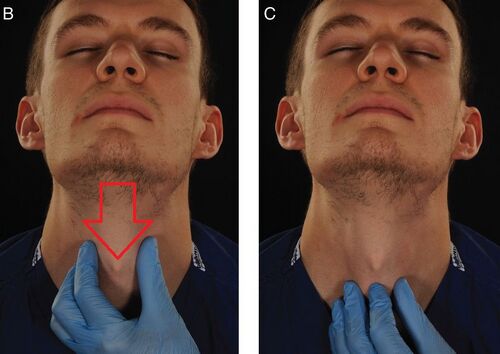
Step 1b
Than move about 2 centimeters lower on the neck into the depression representing the cricothyroid membrane, after which is the cricoid cartilage.[2] Some recommend finding the sternal notch than moving up.[3]
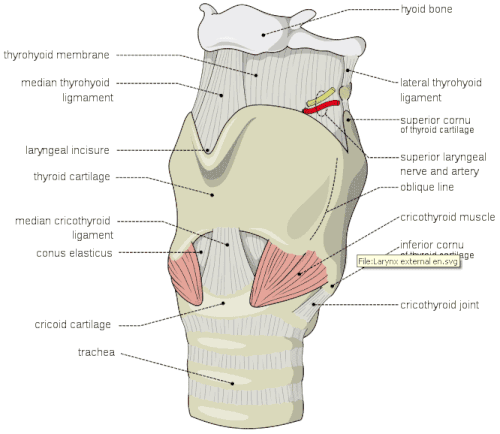
Step 2
Stabilize the neck and make a 4 centimeter vertical cut through the skin over the cricothyroid membrane.[2]
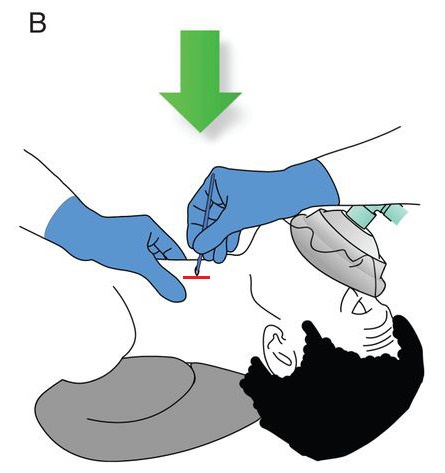
Step 3
Blunt dissect with fingers down to the cricothyroid membrane.[2]
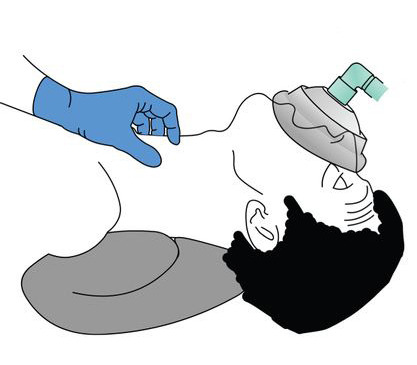
Step 4
Cut with the scalpel across and through the cricothyroid membrane and place your finger through the hole.[2]
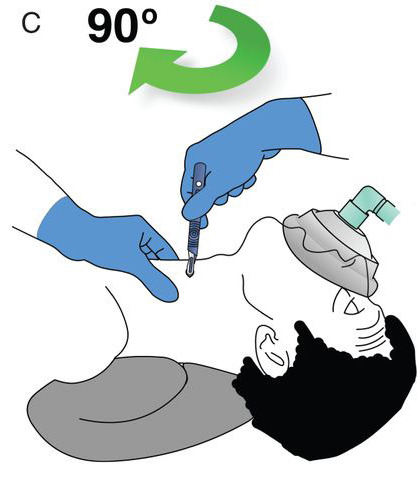
Step 5
Pass the bougie through the hole guiding it inferiorly.[2]
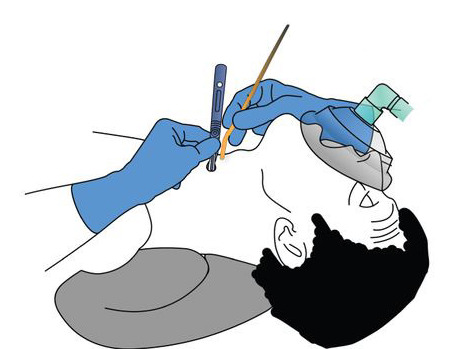
Step 6
Pass a 6-0 cuffed endotracheal tube over the bougie.[2]
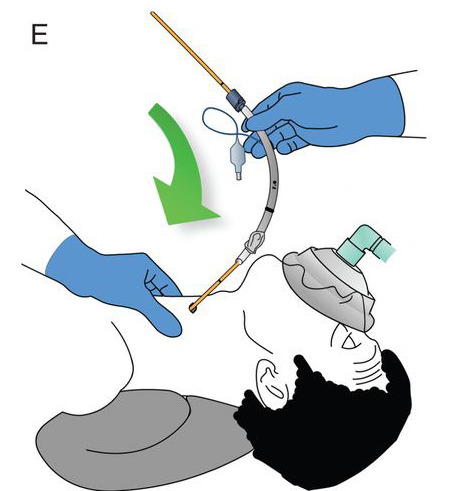
Step 7
Inflate the balloon, then bag valve mask with end tidal CO2 attached.[2] Than secure the tube.

Step 8
Finally verify depth of placement of the endotracheal tube on chest Xray.

References
- ↑ Katos, M. Gregory; Goldenberg, David (June 2007). "Emergency cricothyrotomy". Operative Techniques in Otolaryngology-Head and Neck Surgery. 18 (2): 110–114. doi:10.1016/j.otot.2007.05.002.
- ↑ 2.0 2.1 2.2 2.3 2.4 2.5 2.6 2.7 McKenna, P; Desai, NM; Morley, EJ (January 2021). "Cricothyrotomy". PMID 30726035.
{{cite journal}}: Cite journal requires|journal=(help) - ↑ Chang, Jee-Eun; Kim, Hyerim; Won, Dongwook; Lee, Jung-Man; Kim, Tae Kyong; Min, Seong-Won; Hwang, Jin-Young (November 2021). "Comparison of the Conventional Downward and Modified Upward Laryngeal Handshake Techniques to Identify the Cricothyroid Membrane: A Randomized, Comparative Study". Anesthesia & Analgesia. 133 (5): 1288–1295. doi:10.1213/ANE.0000000000005744.